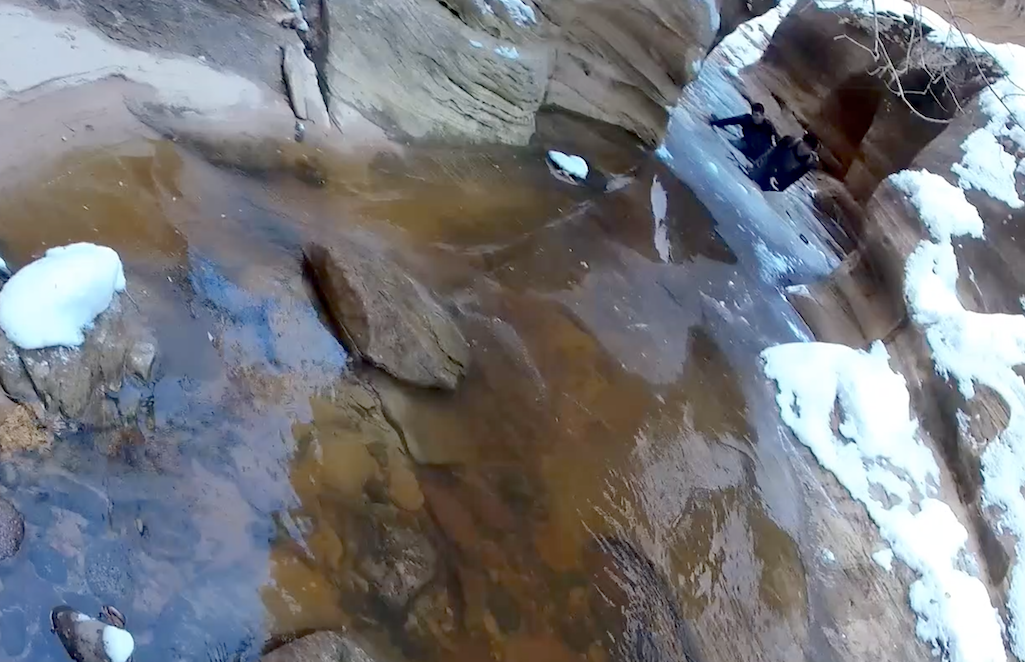
Two hikers, stranded in the backcountry of Zion National Park, had to wade through an ice-covered stream to be rescued/Utah Department of Public Safety
Two hikers stranded in the snowy backcountry of Zion National Park in Utah were rescued by a helicopter crew from the Utah Department of Public Safety. The two, who were not identified, were suffering from hypothermia but had no other injuries, according to the park.
On Saturday, January 21, the park staff received a report of the two overdue hikers. The pair had attempted to hike the Subway route from the top-down on Friday, but they did not return as planned. In response, Zion sent rangers up the Kolob Terrace Road to stage a rescue team and to prepare a landing zone for a helicopter from the Utah Department of Public Safety.
The helicopter crew used Forward Looking Infrared to locate the hikers. They then lowered a rescue specialist, who assisted the hikers into the hovering helicopter using a hoist.

A strobe light (red arrow) affixed to the helmet of a Utah Department of Public Safety officer helped guide the rescue helicopter to the extraction location/Utah Department of Public Safety
The Utah Department of Public Safety crew transported the hikers to a waiting National Park Service medical team for care. One hiker was dangerously hypothermic and transported to a hospital, according to a park release. That hiker is now reported in stable condition.
According to Zion staff, the rescue could not have happened as quickly as it did without the support of Utah Department of Public Safety and their St. George-based helicopter.
“We dedicate a lot of time and training to be prepared for any situation that we may face. Although we cannot train for every scenario, the crew was well prepared for this mission, and did an outstanding job evaluating the situation and coming up with a way to overcome the difficulties of this particular rescue. We appreciate working with the Rangers at Zion and their professionalism. They always do an excellent job thinking of contingency plans and providing great support to the crew during the missions,” said Chief Pilot Luke Bowman.
“We appreciate our partnership with the Utah Department of Public Safety. Their execution of this rescue was outstanding,” Zion Chief Ranger Daniel Fagergren said. “Helicopters are not always available, and, even when they are, conditions don’t always allow them to fly. Winter conditions create an extremely challenging rescue environment. Currently, many of our canyons drop to sub-zero temperatures at night, streams and pools are iced over and deep snow covers the trails at higher elevations. When you visit, you need to understand and be prepared for the conditions you might face here. These kinds of operations are inherently dangerous for our staff and our partners, and they don’t all end like this one.”

Department of Public Safety Aero Bureau (L to R) Rescue Specialist Hall, Pilot Charney, and Hoist Operator Curtis after a successful rescue in Zion/NPS Image, Jonathan Shafer

 Support Essential Coverage of Essential Places
Support Essential Coverage of Essential Places



